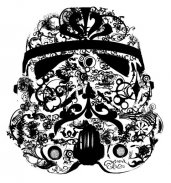




Drawing Graffiti Ideas

Description of Drawing Graffiti Ideas
One of the coolest forms of expression is no doubt graffiti. Whether you look into the deep history of how it all began, or you just want to get good at using a can of paint, you will find that there's a great glory to this that you can learn. It's not without a few difficult matters, however, as you can't just go to your local hardware store and then hit the proverbial ground running. There are things that you need to know about before you get going forward. With that in mind, consider a few things that you should know about learning how to craft this type of art, legally, and safely for that matter.
How to Draw Cool Graffiti Art - Before you start a piece of graffiti art, you should draw a small scale version of the large piece you want to create first, then when you begin your actual piece, its a simple task of just scaling up your graffiti sketch. If you need ideas for a graffiti font to use, there are plenty of sites online that have examples for you to copy. For the outlines, use a fine marker pen. In order to produce a 3D effect, shade around the letters you've outlined with a different color. Then use permanent markers to color in your letters.
Once you are ready to paint your sketch on to your larger canvas or wall, you need to draw a reference grid over your small drawing. Sketch a full size replica of the grid on to your wall or canvas that you are using for your scaled up graffiti piece. Use either chalk, charcoal or diluted paint to draw the large grid. To make marking the grid out easier, the simplest thing to do is to use a piece of string.
Graffiti Art and Finding Good Graffiti Supplies - There are numerous forms of graffiti. An individual marking such as slogans is one of the simplest forms of graffiti. Example of this type can be found in bathrooms, walls and this is usually in hand written. In fact, graffiti art does not even conform to location. Somehow a bold graffiti artist decides to express his ideas on the stone wall in the neighborhood without the consent of the authorities, and then it takes the tax payer's money to clean the walls. But the good thing with graffiti is that it sets the spirit free. Over time, debate has been ranging over the legality of graffiti art, whether it should be considered as art in any form or whether it is just an act of vandalism or an abuse on art.
Include graffiti style lettering with letters that overlap and are drawn in 3D. In particular the use of the bold style lettering is really distinctive to graffiti art. The images themselves will usually be hard hitting, and be painted in stark colors utilizing strong shadows and outlines to add depth and definition. Images usually depict social or political issues close to the artist's heart. When you've colored your work in, you can add the fine definition with a brush to enhance the fine lines and borders around your figures and letters. You can preserve it for years to come with a thin layer of varnish.
So if this street was a street artist's canvas, what rules can/should be applied? The answer is of course ones that apply to the graffiti itself and those who put it there, subject if course to normal rules regarding decency and other the rights of others not to have graffiti in their street. When your organization decides to embrace creative thinking you will most likely encounter new situations that you need to deal with. Don't be alarmed, just involve the appropriate people and do not try to make your existing rules fit, they will restrict your creative output.


























